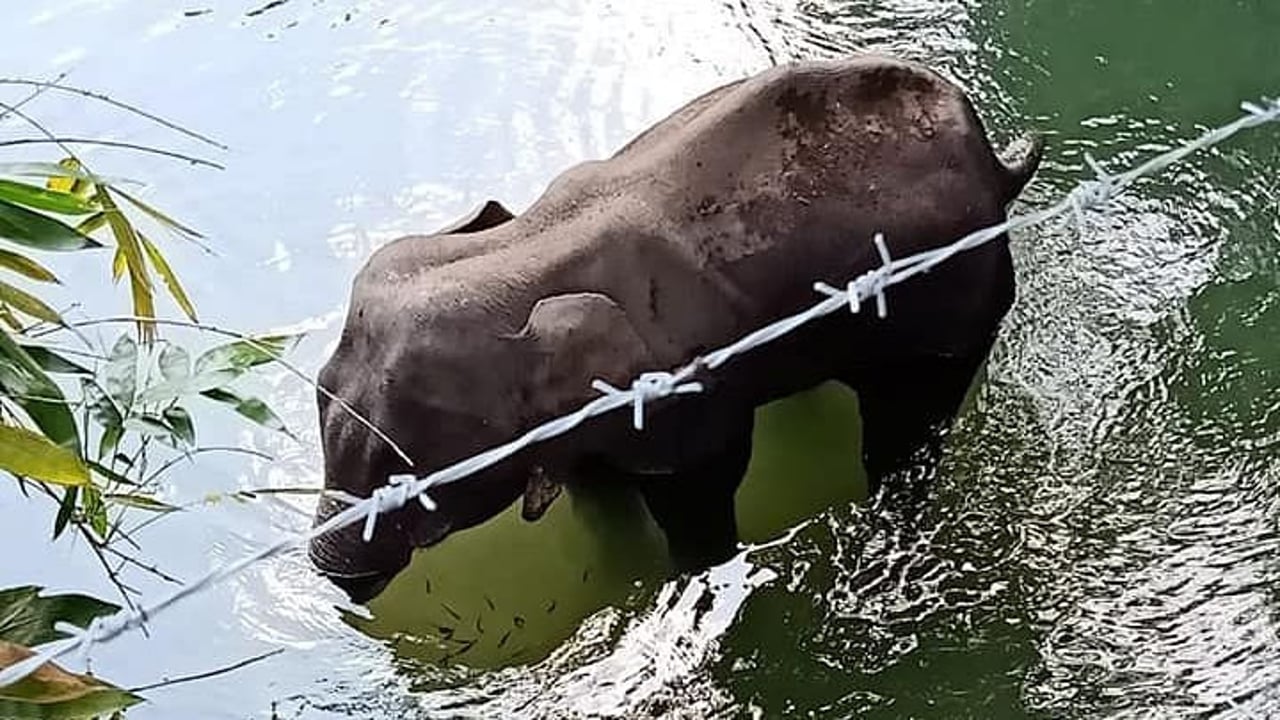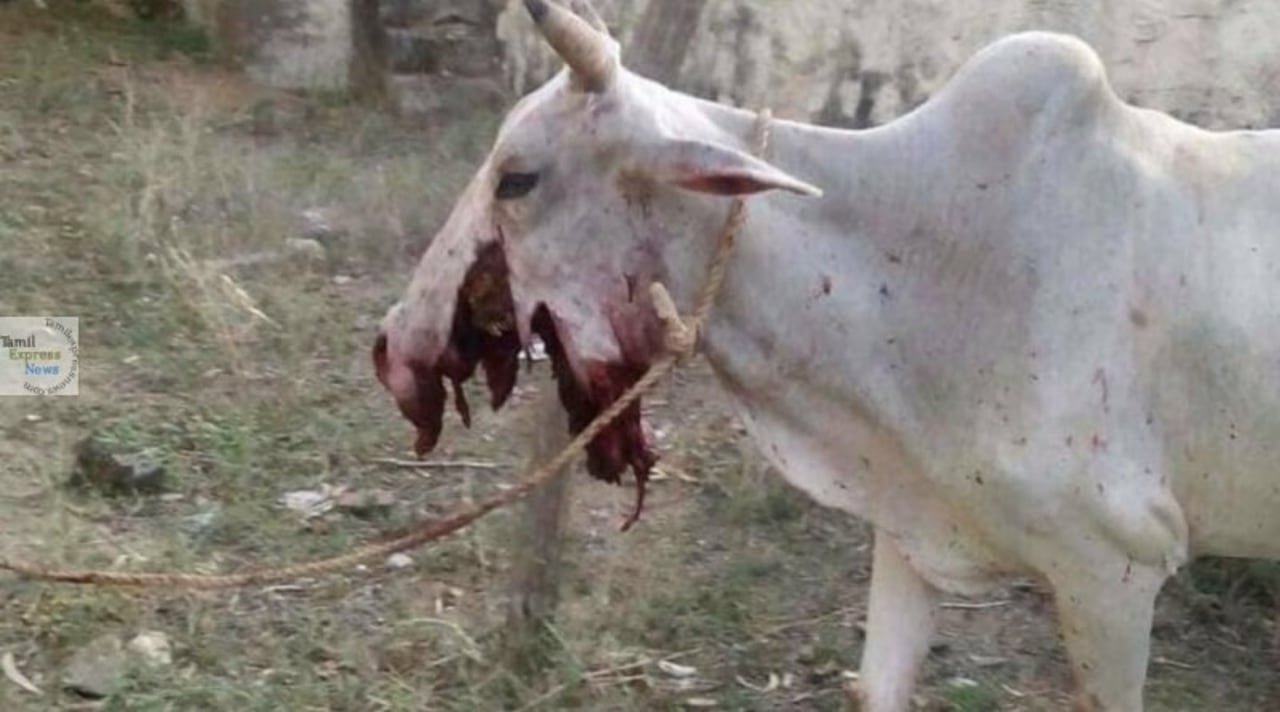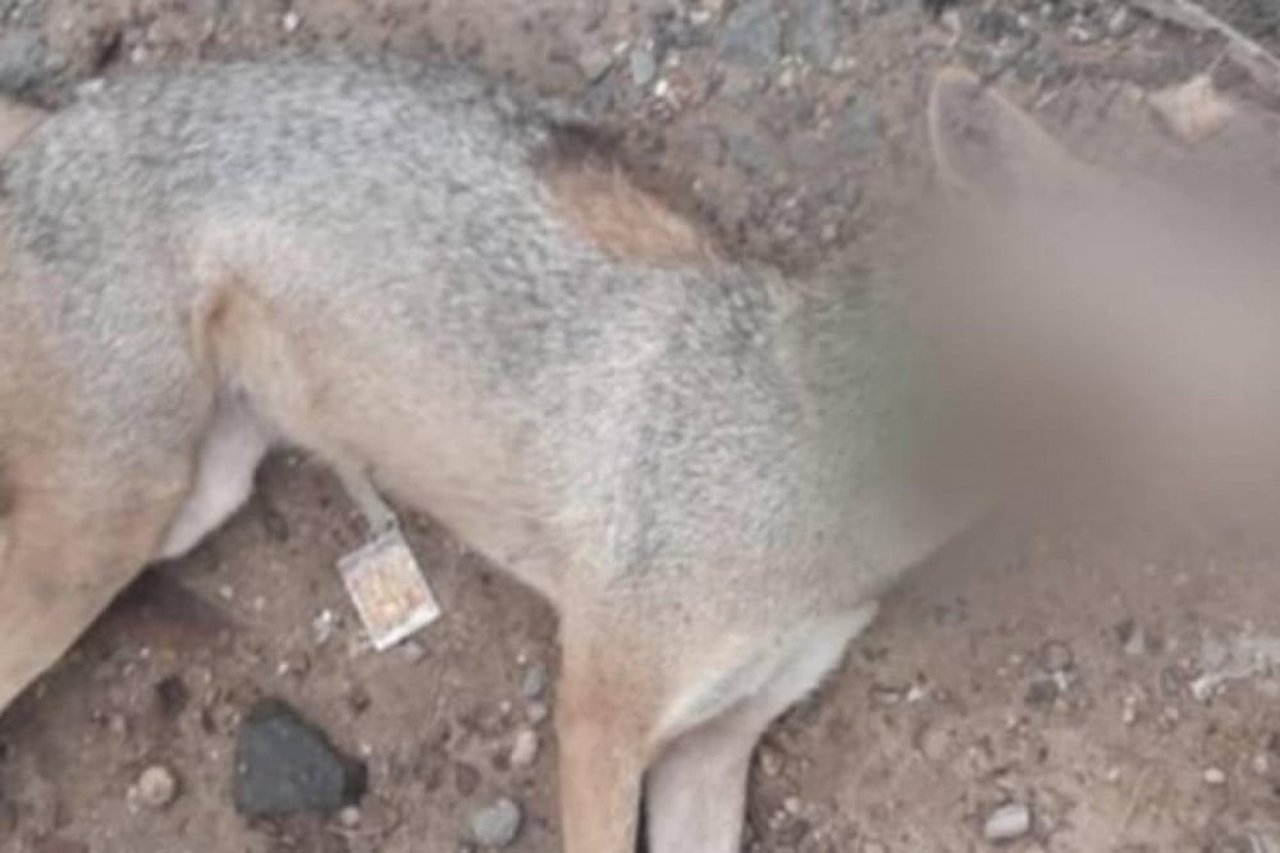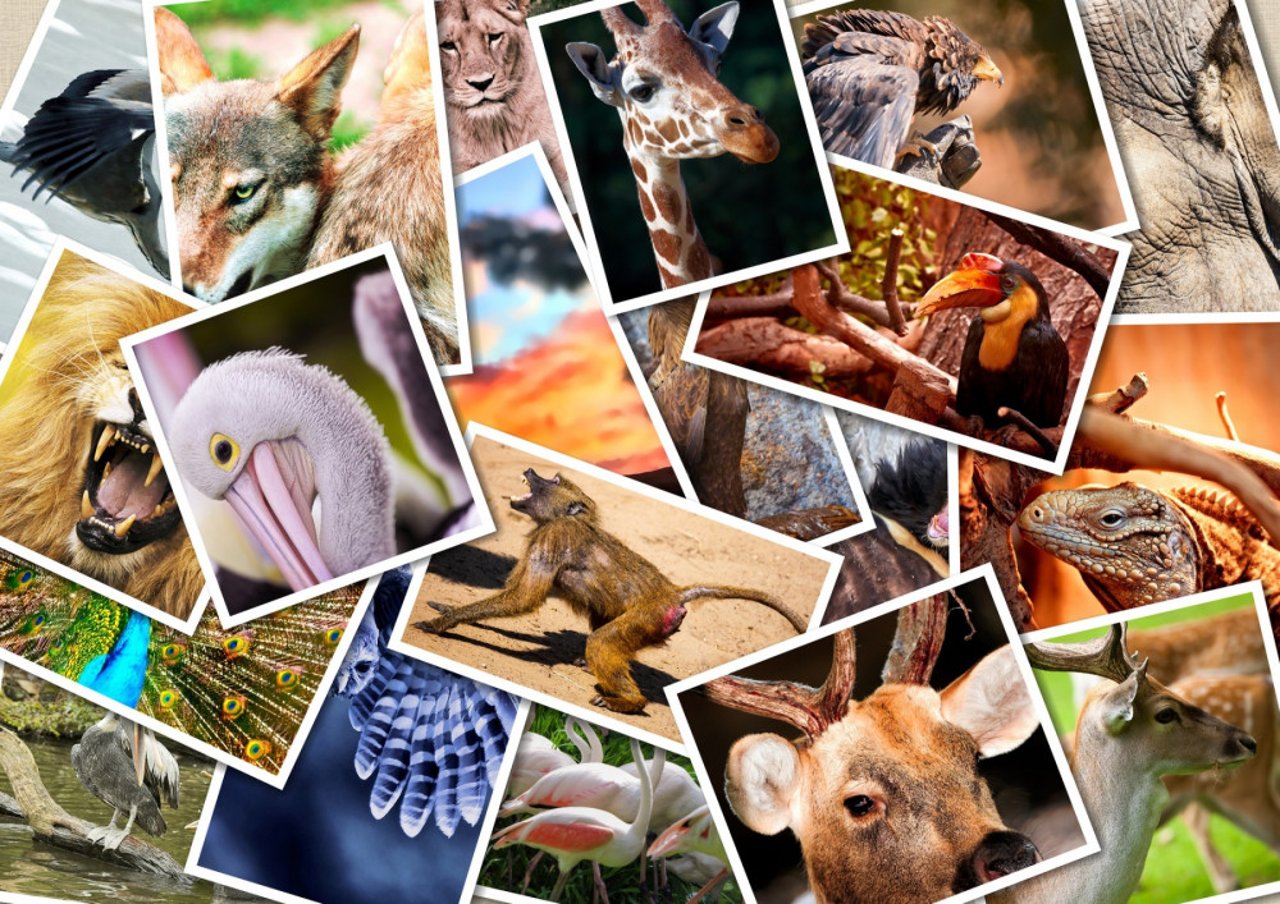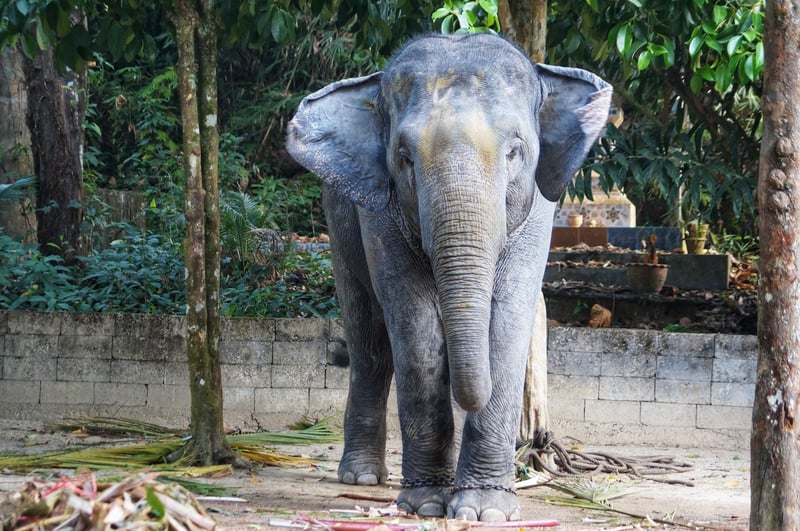
The Deafening Crackle of Inhumanity: What lies behind the haunting incidents of man-animal conflict?
Blog
"The greatness of a nation and its moral progress can be judged by the way in which its animals are treated." - Mahatma Gandhi
The recent case of a wild pregnant elephant
In a recent heart-wrenching incident that caused national and international outrage, a wild pregnant elephant at Palakkad village in Kerala ate a fruit-filled with firecrackers that unfortunately exploded in her mouth. The explosion broke the elephant's jaw due to which she was unable to chew any food; she ended up in a nearby river where she stood for days submerging her burning mouth in the water. The elephant and her unborn child finally starved to death[1]. A similar heartbreaking incident occurred in Himachal Pradesh, where a pregnant cow grazing in the fields accidentally consumed wheat flour with explosives, resulting in gashes and injuries in her jaw and tongue[2]. Another case occurred in Tamil Nadu, where a jackal died when he consumed meat laced with explosive substances[3].
Image for reference: The pregnant elephant died while standing in the water
Image for reference: The pregnant cow injured after being fed firecrackers wrapped in wheat flour in Himachal Pradesh
Image for reference: A Jackal in Trichy district died after a country bomb
Human-Animal Conflict
Sadly, the occurrence of such incidents is not only frequent but also interminable. Some cases of animal deaths are due to appalling pranks that are downright cruel. However, there is a deeper problem behind these stories: human-animal conflict. The conflict refers to the interaction between wildlife and humanity, and the resulting adverse impact on people, animals, habitats, and resources. These include crop damage, livestock depredation, injuries to and deaths of humans as well as animals. Crop damage and livestock loss is perhaps the most common outcome of man-animal conflict since farmlands are easily accessible and promise plentiful food for animals. For instance, wild boars commonly destroy crops by crushing, eating, and destroying the plant roots, which have effects on the plants and farm equipment. Another example includes the rhesus monkeys in Himachal Pradesh that are often linked to crop damage. The impact of crop and livestock damage can be devastating to farmers since it can lead to a loss of income and food security. Therefore, it is understandable that the farmers would take desperate measures to ensure their safety.
Oftentimes, risky and inhumane solutions are employed (such as laying snares in the wild) to drive away unwanted animals which could destroy crops. However, this can have unintended consequences and result in collateral damage for animals and sometimes even humans. In a recent incident in Tamil Nadu, a six-year-old child died when he inadvertently consumed a food item that was laced with explosives[4]. Thus, it is imperative to understand the problem in-depth before we can come up with informed solutions.
The complex web of causes…
Are the animals to blame for their intrusive, arrogant nature? Or are humans themselves the root cause of the problem? Instead of getting into a blame game, we need to start by asking ourselves what the specific causes of man-animal conflict are, since the solutions may lie within the reasons itself.
- One of the main factors for man-animal conflict is urbanization. It includes population expansion, an increase of road density and networks, growth of food demand leading to land transformations to farms, rising mining, and industrial activities, and human settlements. These factors can endanger the lives of animals, degrade their habitat, and create competition for the limited natural resources, causing animals to wander into our settlements for land and food.
- Another cause of the conflict is environmental destruction, which is prompted by human activity. Environmental issues include deforestation, blocking and pollution of rivers, and the use of pesticides and chemicals. The habitat loss causes animals to venture further for food and shelter, and farmlands offer a perfect opportunity for them.
- An imbalance of prey and predators in the wild can also be a cause of human-wildlife conflict. For instance, illegal poaching and lack of grass in forest areas cause a decrease in prey availability. As a result, predators are forced to roam outside forest perimeters in search of food and can eventually come into contact with livestock, causing a conflict with humans.
Image for reference: Deforestation, environmental destruction
The Government’s approach to the problem
One of the Indian government’s solutions to the man-animal conflict lies in a mechanism wherein the government declares animals as 'vermins.' Vermins are wild mammals or birds which are either dangerous to human property and life, harmful for crops, or diseased in any way. The government can classify any animal that poses a threat as a 'vermin,' making it legal to cull or hunt (under specific circumstances) this animal.
- Firstly people find loopholes in the law and employ inhumane methods, such as using firecrackers and poison, which not only keeps the targeted animals away but also endangers other wildlife.
- Secondly, the wildlife protection laws are not enforced in a suitable manner by the government agencies, thereby diluting their impact. For instance, the vermin law requires forest officials to be present during culling or hunting, however, this requirement is not followed in many cases.
- Thirdly, the punishment and fines that are stipulated for crimes are not fully applied.
Image for reference: Wild mammals
Creating a win-win solution
So now we ask ourselves again, is there a win-win solution for resolving the human-wildlife conflict? Perhaps there can be. Through a united effort and in consultation with wildlife experts, we can implement cautious and creative solutions such as land-use planning, community-based natural resource management, payment for environmental services, ecotourism, creating natural barriers, maintaining ecological balance, and educating communities on how to react peacefully. Such steps can significantly reduce the number of incidents and deaths of animals in the wild, protect crops and livestock, and improve farmers' livelihood in rural areas. Violence is NOT the answer to man-animal conflict. We CAN do better!
"Nonviolence is the greatest force at the disposal of mankind" - Mahatma Gandhi.
What's our contribution?
We can all contribute towards creating a world where humans and animals can coexist in peace and harmony. To bring about this change to our world, World Animal Protection is asking the Government of India to effectively enforce existing wildlife protection laws and stop the trade of wild animals and wild animal products. Sign this petition and ask Shri. Narendra Modi to support the call for a global wildlife trade ban at the G20 summit.
After watching this video, you will surely understand our concern and stand with us to put an end to the Global Wildlife Trade Forever.
Sources:
[4] https://www.freepressjournal.in/india/after-elephant-and-cow-a-6-year-old-boy-dies-by-biting-into-an-explosive
Please Note: The views expressed by the author do not necessarily represent those of World Animal Protection.
About the Volunteer: Nikita Dhawan is a tenth-grade student at the American Embassy School, New Delhi, and an intern at the World Animal Protection, India. She believes that the Earth is as much a home to animals as it is to human beings, and hence they deserve our respect and protection. She stands against all forms of animal captivity and their use for human entertainment. Outside of school, she enjoys writing, photography, and playing the piano.
